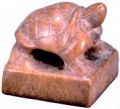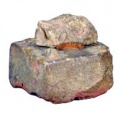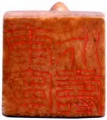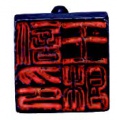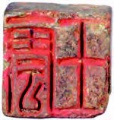"Early Printing in Korea - 2.1 The Emergence of Printing Culture and Korea"의 두 판 사이의 차이
잔글 |
|||
| (같은 사용자의 중간 판 4개는 보이지 않습니다) | |||
| 1번째 줄: | 1번째 줄: | ||
| + | {{Navbox | ||
| + | |서명= [[Understanding Korea materials - Early Printing in Korea|Early Printing in Korea]] | ||
| + | |시리즈명= [[한국이해자료#Understanding Korea Series|Understanding Korea Series No.2]] | ||
| + | |이전=[[Early Printing in Korea - 1. Korea’s Memory of the World and Early Printing (古印刷)|1. Korea’s Memory of the World and Early Printing (古印刷)]] | ||
| + | |현재=[[Early Printing in Korea - 2.1 The Emergence of Printing Culture and Korea|1) The Emergence of Printing Culture and Korea]] | ||
| + | |다음=[[Early Printing in Korea - 2.2 The Development of Printing Materials|2) The Development of Printing Materials]] | ||
| + | }} | ||
| + | |||
| + | |||
| + | |||
Whether in the East or West, printing techniques originated from the desire to relay information to as many people as possible in the shortest time. Communities began forming due to the development of agriculture, and the subsequent population explosion caused those communities to grow ever-more complex at a rapid pace. The need for widely accepted rules within the community to create a harmonious coexistence engendered the invention of scripts. Individual human beings, as the vessels of their own creation and discoveries, are inherently mortal, and there exists a definite limit in the preservation and transmission of their knowledge and information. Something to record and distribute scripts more efficiently was needed: books appeared and printing techniques were developed. They created a leap in cultural progress. | Whether in the East or West, printing techniques originated from the desire to relay information to as many people as possible in the shortest time. Communities began forming due to the development of agriculture, and the subsequent population explosion caused those communities to grow ever-more complex at a rapid pace. The need for widely accepted rules within the community to create a harmonious coexistence engendered the invention of scripts. Individual human beings, as the vessels of their own creation and discoveries, are inherently mortal, and there exists a definite limit in the preservation and transmission of their knowledge and information. Something to record and distribute scripts more efficiently was needed: books appeared and printing techniques were developed. They created a leap in cultural progress. | ||
| 5번째 줄: | 15번째 줄: | ||
| − | + | <gallery mode="slideshow" caption="Seal for enclosure" align="center"> | |
| − | + | File:UKS02_Early Printings in Korea_img_0.jpg | |
| − | + | File:UKS02_Early Printings in Korea_img_1.jpg | |
| − | + | File:UKS02_Early Printings in Korea_img_2.jpg | |
| − | + | File:UKS02_Early Printings in Korea_img_3.jpg | |
| − | + | File:UKS02_Early Printings in Korea_img_4.jpg | |
| − | + | File:UKS02_Early Printings in Korea_img_5.jpg | |
| + | </gallery> | ||
| − | + | <gallery align="center"> | |
| + | 파일:UKS02_Early Printings in Korea_img_6.jpg|<Figure 2> Inscription on Yeongachilnyeonmyeong geumdongyeoraeipsang (National Treasure No. 119): Goguryeo Statue of Buddha made in the late 6th century with an inscription written on the back of the halo. | ||
| + | File:UKS02_Early Printings in Korea_img_7.jpg|<Figure 3> Part of Hwaeomseokgyeong: Stone Sutra of Hwaeomgyeong made in the 9th century. Scripture is engraved on stone. It is believed to have been used to decorate the wall of Jangyukjeon at Hwaeom Temple built by Great Buddhist Priest Uisang (625-702). Made with various materials scriptures are one of the foundations of Korean printing culture. | ||
| + | </gallery> | ||
| − | + | ''Mugujeonggwangdaedaranigyeong'' (無垢淨光大陀羅尼經, Sutra of Pure Light), the world’s oldest surviving woodblock print, is in Korea. This short religious scroll describes the process of building and dedicating a stupa, and generally estimated to have been published before the mid 8th century, during the United Silla period. Buddhism was transmitted and popularized in Korea long before then; technology and sciences such as casting and astronomy were already thriving, and Korea was cultivating its own unique culture in the midst of an active cultural exchange with China. The probability that Koreans of that time used printing technique to promote philosophy and culture is fairly high. Even though there exist some disputes regarding the dating of this scroll, its value as the earliest print should not be underestimated. It has a definite potential to act as a key in solving questions related to the origins of printing techniques, not only in Korea but also worldwide. | |
| − | + | {{틀:UKS Early Printings in Korea}} | |
2017년 1월 19일 (목) 21:00 기준 최신판
| Understanding Korea Series No.2 | ||
| ← Previous | Early Printing in Korea | Next → |
| 1. Korea’s Memory of the World and Early Printing (古印刷) | 1) The Emergence of Printing Culture and Korea | 2) The Development of Printing Materials |
Whether in the East or West, printing techniques originated from the desire to relay information to as many people as possible in the shortest time. Communities began forming due to the development of agriculture, and the subsequent population explosion caused those communities to grow ever-more complex at a rapid pace. The need for widely accepted rules within the community to create a harmonious coexistence engendered the invention of scripts. Individual human beings, as the vessels of their own creation and discoveries, are inherently mortal, and there exists a definite limit in the preservation and transmission of their knowledge and information. Something to record and distribute scripts more efficiently was needed: books appeared and printing techniques were developed. They created a leap in cultural progress.
The development of printing was revolutionary. It made the mass production of knowledge possible. Although the technique was not perfect from the beginning, it evolved through countless trials and errors. Printing’s specific origins, where and when, are yet to be revealed. Nevertheless, when one traces back the development process of printing it is widely accepted today that the origin of printing technique may have started with various forms of seals where one engraves letters or images on the surfaces of stones or metal and stamped.
- Seal for enclosure
<Figure 3> Part of Hwaeomseokgyeong: Stone Sutra of Hwaeomgyeong made in the 9th century. Scripture is engraved on stone. It is believed to have been used to decorate the wall of Jangyukjeon at Hwaeom Temple built by Great Buddhist Priest Uisang (625-702). Made with various materials scriptures are one of the foundations of Korean printing culture.
Mugujeonggwangdaedaranigyeong (無垢淨光大陀羅尼經, Sutra of Pure Light), the world’s oldest surviving woodblock print, is in Korea. This short religious scroll describes the process of building and dedicating a stupa, and generally estimated to have been published before the mid 8th century, during the United Silla period. Buddhism was transmitted and popularized in Korea long before then; technology and sciences such as casting and astronomy were already thriving, and Korea was cultivating its own unique culture in the midst of an active cultural exchange with China. The probability that Koreans of that time used printing technique to promote philosophy and culture is fairly high. Even though there exist some disputes regarding the dating of this scroll, its value as the earliest print should not be underestimated. It has a definite potential to act as a key in solving questions related to the origins of printing techniques, not only in Korea but also worldwide.
| Understanding Korea Series No.2 Early Printings in Korea |
|
1. Korea’s Memory of the World and Early Printing (古印刷) 2. The Origins of World Printing Culture and Korea · 2.1 The Emergence of Printing Culture and Korea · 2.2 The Development of Printing Materials 3. Woodblock Printing and Movable Type Printing · 3.1 Woodblock Printing · 3.2 Movable Type Printing · 3.3 Other Early Printing 4. The Invention and Development of Metal Movable Type Printing · 4.1 Metal Movable Type Casting · 4.2 Metal Movable Type Typesetting 5. The Publishing Entities of Korean Traditional Prints · 5.1 The Government Publications (官) · 5.2 The Private Publications |
